For my holidays-from-cycling time, I established a base at Cotonou’s best budget accomodation, discretely located in front of the Cordon Bleu restaurant on the main Haie Vive street. The Gästehaus has wifi and I discovered that I had been cycling as close as 2 km from a nuclear disaster site. Americans had dropped bombs by mistake in 1966 on the site of Palomares in Spain, is just near Cuevas del Almanzora that I cycled through in Andalusia.
But wifi is not the point of my holidays, although it is always enjoyed when available in Africa. Busi joins me and we get ready for a trip through the most interesting sites of Benin. Travelling squeezed in a collective taxi is much less comfortable than on a bicycle, and quite unpredictable as outside Cotonou, we can’t tell when the next departure will be. Tourism is quite under-developed: there are many sights, but not taken care of, and the accommodation is often empty or run down.
Ganvié
Ganvié is a village on stilts just across the lagoon, north of Cotonou.

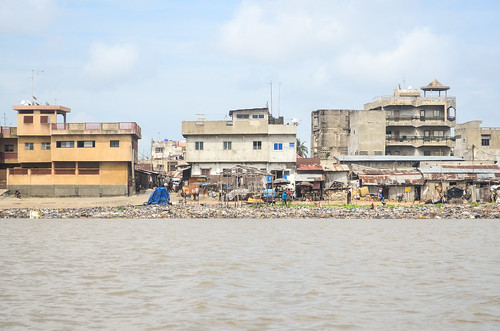

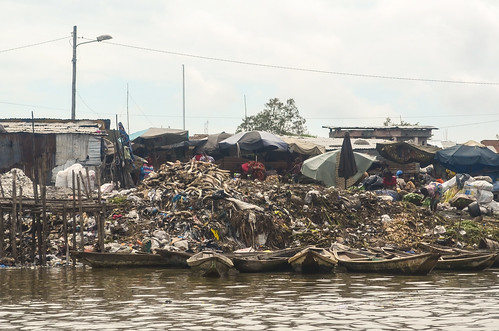
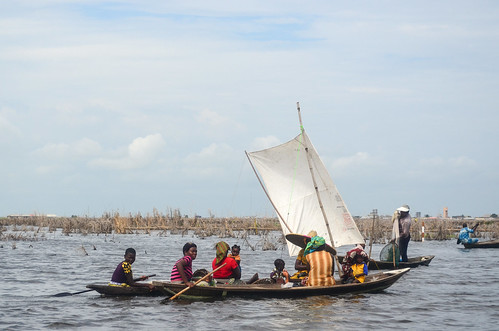
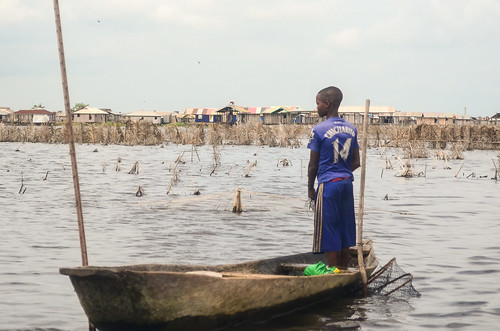
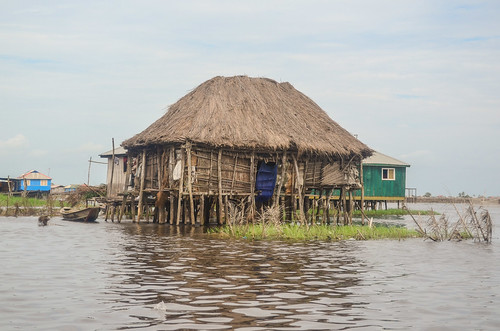
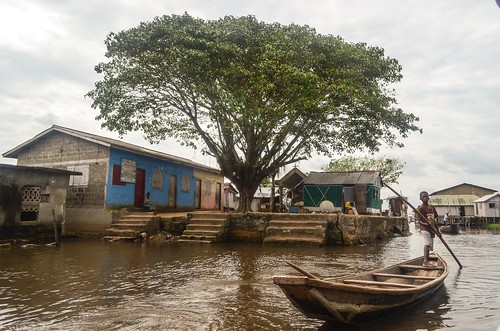
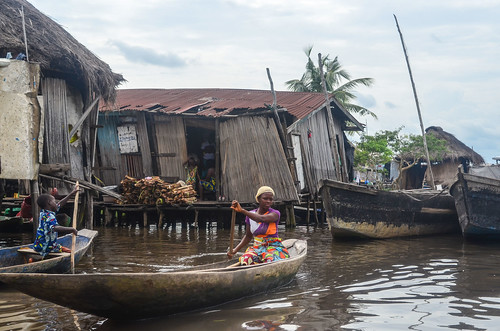

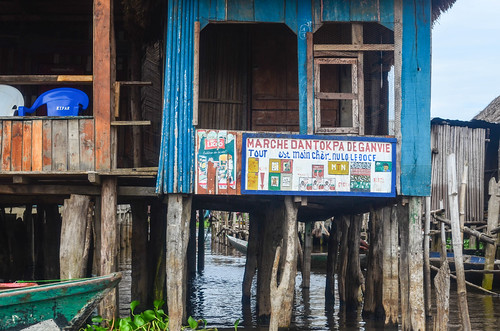
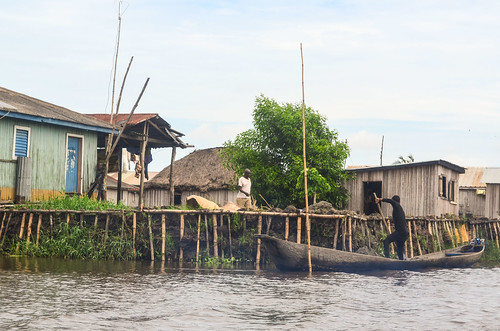
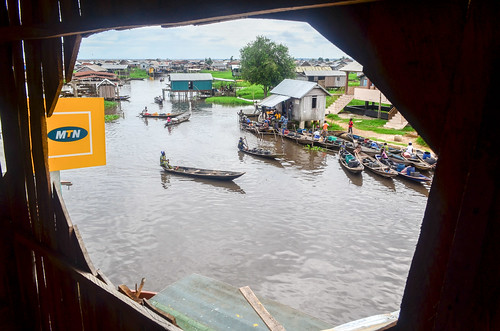
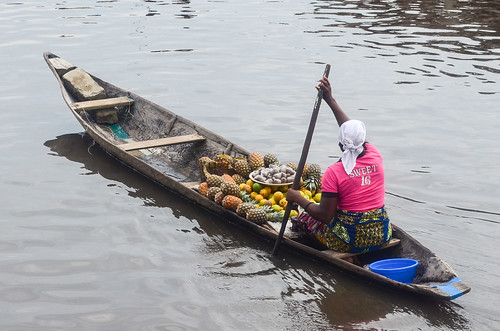

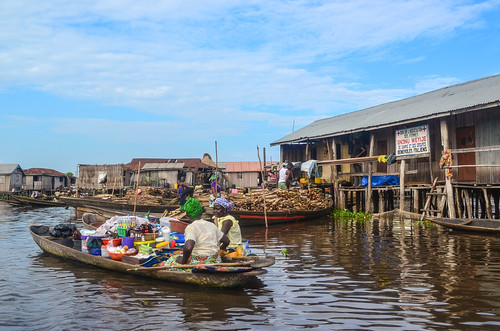
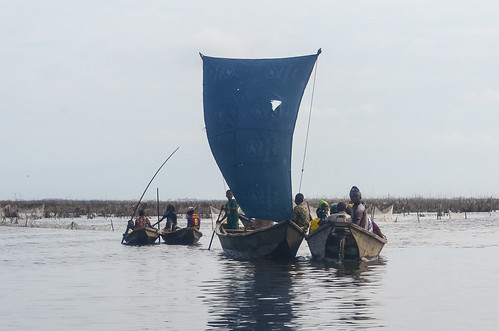
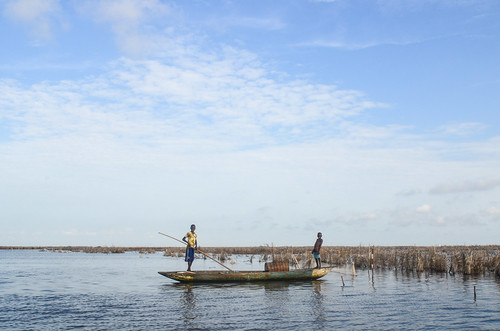
Abomey
Abomey is the cutural center of Benin, home to the Dahomey kingdom (1600-1900). I have cycled through it when I came from Togo, and this time is the opportunity to make more visits.
In Bohicon, one can find the underground village of Agongointo-Zoungoudo. It is where chiefs and families could hide when the kingdom was attacked. Roughly, those are today just holes deep in the ground, but well conserved. The most surprising to me is that those huge cavities were forgotten, undiscovered, until the Danish cooperation started building a bypass road here. A big machine fell in a hole in 1998 and a UNESCO site was born.
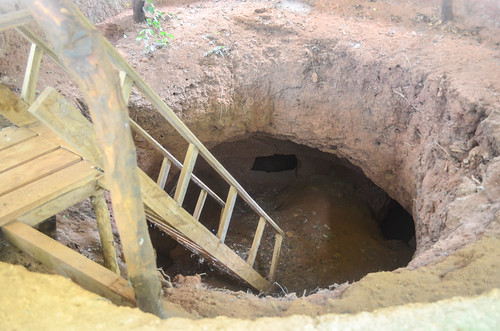


We have a guide taking us to various sites during the day. The transportation in Benin, except between 2 cities, seems exclusively possible with motorbikers. Try to find a taxi in Cotonou … impossible. However, the motorbikers are everywhere. Just flag one down and he will take you anywhere (even 50 km away) for some small money.
They are so many because anyone can become moto-taxi. I guess a reasonable number of them have a profession, and they use their motorbike when their official job doesn’t work well.
Our next stop is the voodoo market of Bohicon. Voodoo is kind of the religion of Benin. Originally called Vodun, it has spread across the Atlantic ocean and invaded the movie industry, but the heart of the culture lies in this part of West Africa.
The voodoo priest is like a doctor and the voodoo market is the pharmacy. One can see the voodoo priest for any problem: I need rain for my crops, I need a job, I need to settle a dispute, etc. For example, if you have an erection problem and consult the voodoo priest, he will make a ceremony to solve the problem. But he will need ingredients to perform it, and can ask for 41 penises (9, 16, 41 being voodoo numbers) of animals. The patient will then visit a voodoo fetish market, gather the ingredients needed by the priest, add one male and one female chicken for the priest, a lot of alcohol, and bring it back for the ceremony. At the end of it, the ingredients having been offered to the called deity, the patient will see results within 41 days.
That is why a fetish market has everything that can be requested by a voodoo priest. It is mostly dead animals. They are not that smelly and even cute:
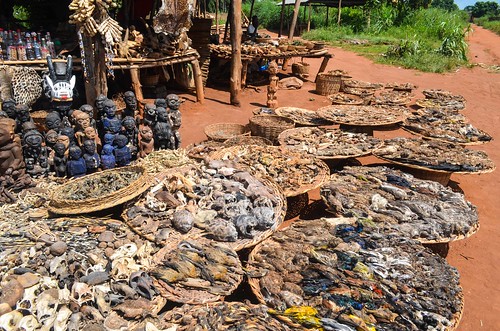
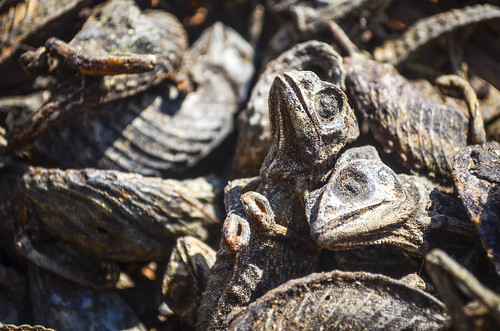
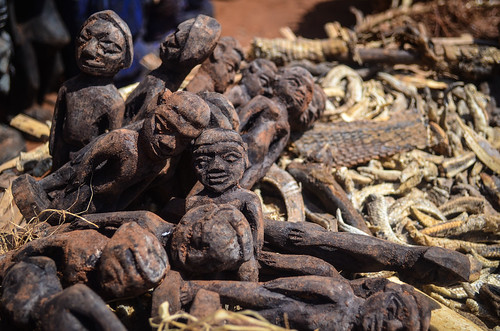
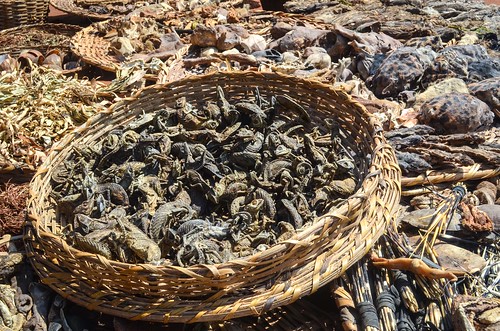
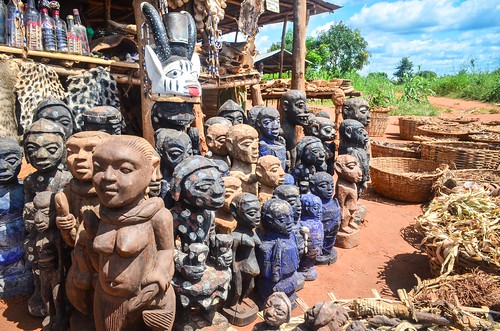
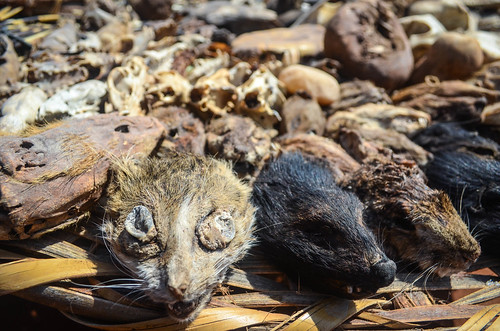
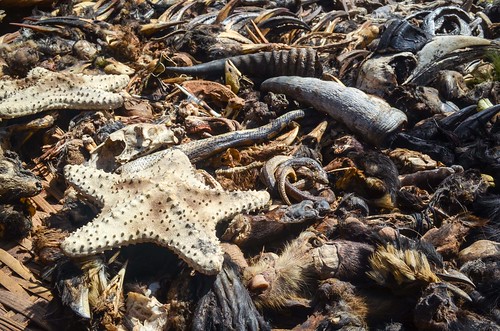

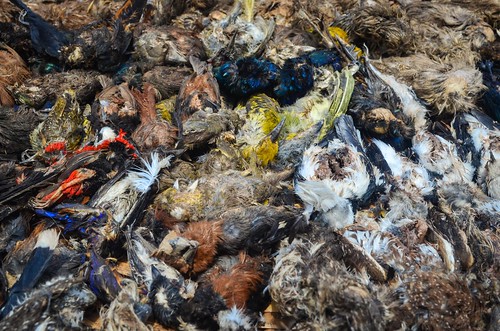
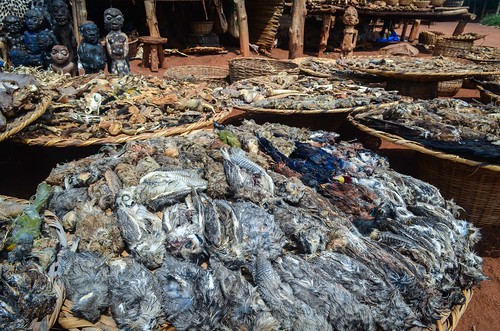
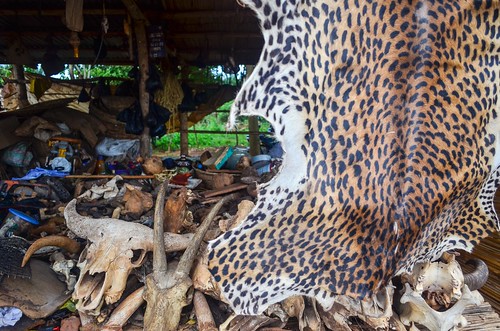
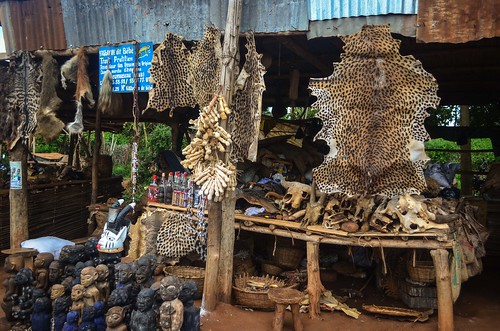
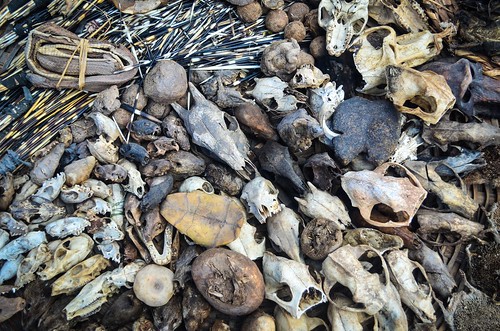
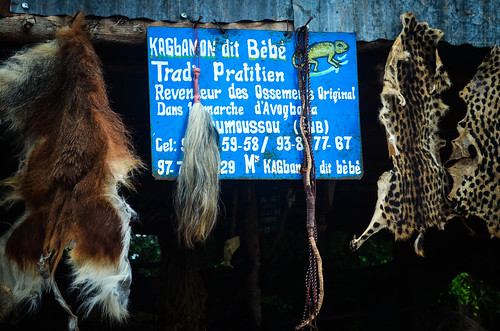
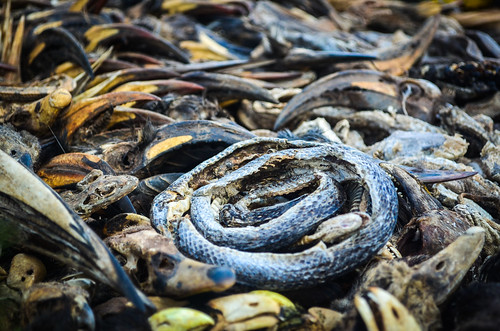
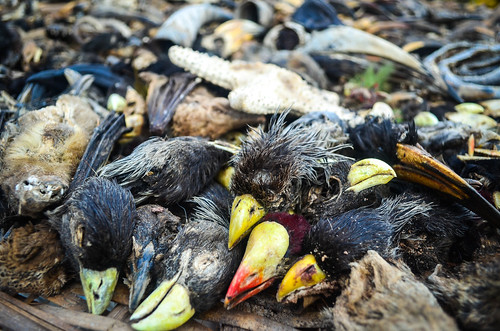
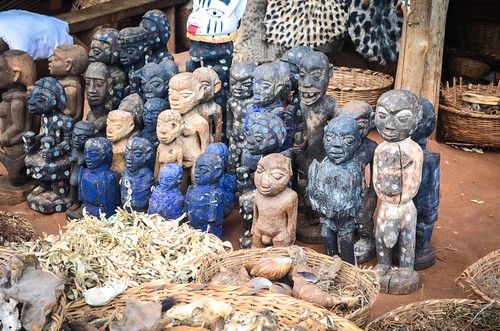
And our last stop for the day is at the home of a voodoo priest, in a village west of Abomey. In those tribal rites, one must always bring money and/or alcohol to the chief. After drinking some schnapps, the already-intoxicated priest greets the deities on our behalf. The guide explains the purpose of each gesture and each statue, which can really last forever. By the way, the wikipedia article is illustrated by a photo of 2008 taken at the same shrine, meaning there is more organization in the tourist trail than it looks like.
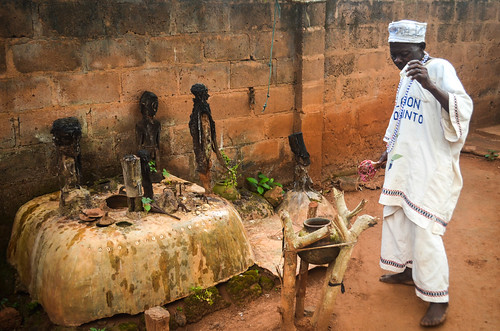
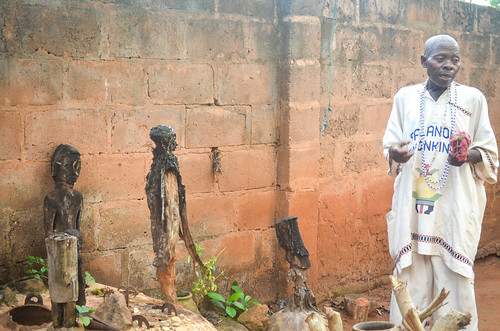
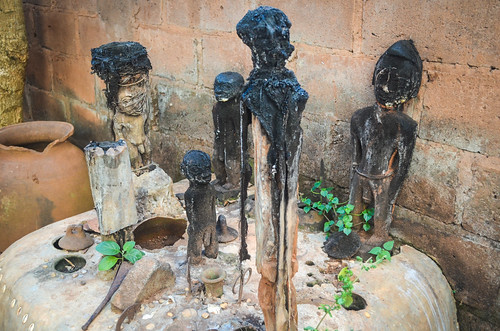

Lakes Doukon and Anhémé
At the border with Togo, near Lokossa, there is the lake Doukon, home to a family of hippos. They did not live in peace with the villagers that fish on the small lake. The villagers killed one of them that trampled a pregnant lady from the village. Later, a NGO arranged visits on the lake to the hippos, bringing money to the community and keeping the hippos alive.
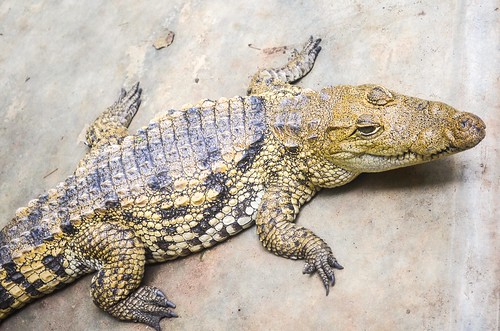
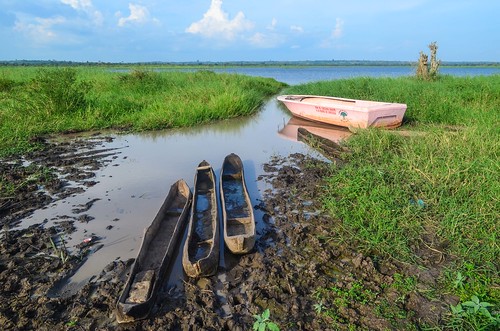

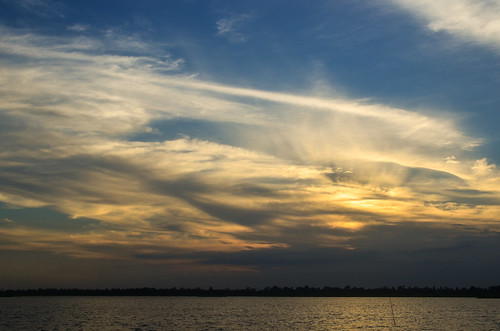
The hippos sleep all day long, so the best times to see them are early morning and late evening. Even at the sunset hours we could only see a nose breathing just above the water level.
Not far away lays the lake Anhémé and the village of Possotomé. It is where the Possotomé mineral water is bottled. The spring is warm and it is possible to take a shower in it.

Ouidah
Ouidah was once the only connection between Benin and the western world. It was conquered by the kingdom of Dahomey in 1727 so that the kings could have access to the coast, and consequently benefit from the slave trade.
The fort of São João Baptista de Ajudá was built by the Portuguese to keep the slaves until a ship was on the shores. Until 1961, after the independence of Benin (called Dahomey at that time), it was still part of Portugal. It nowadays hosts a museum, detailing once again the logic of the slave trade, local chiefs working hand-in-hand with western slave merchants, providing prisoners and receiving in return alcohol, iron rods, guns, gunpowder, more weapons, and presents.
The museum has also a very interesting photography collection illustrating the similarity of the cultures in Benin and Brazil. To each photo taken in Benin matches a photo of Brazil, both taken in the 60s-70s, and it is stunning to see how the traditional clothing, voodoo ceremonies, artifacts, are the same. If most of the slaves from Senegal and Gambia were taken to North America, the slaves from the ports of Benin and Nigeria have apparently been sent in majority to Brazil.
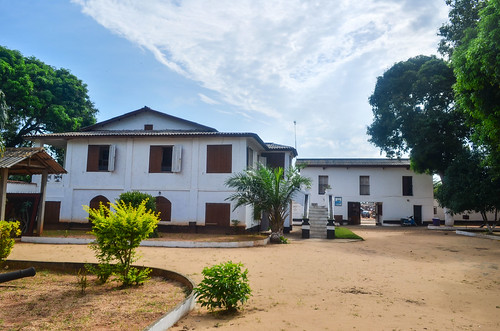
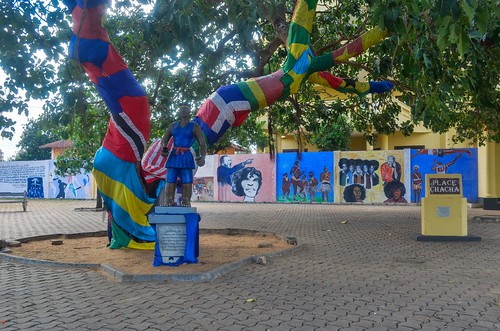


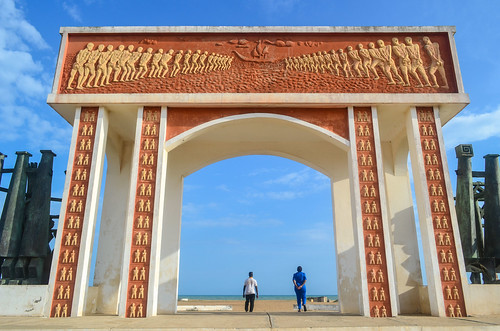
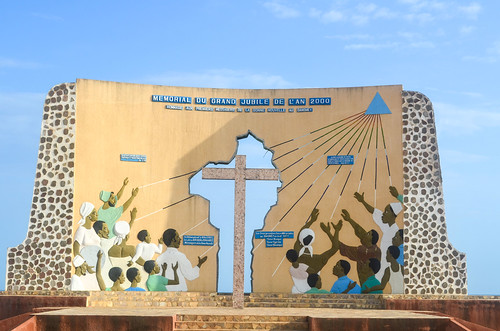

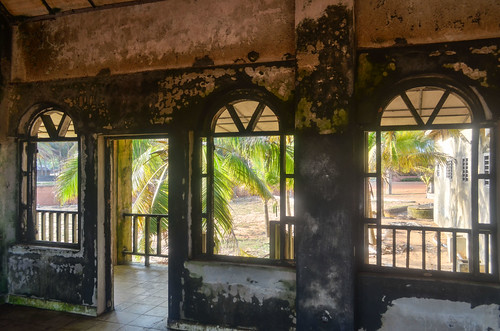
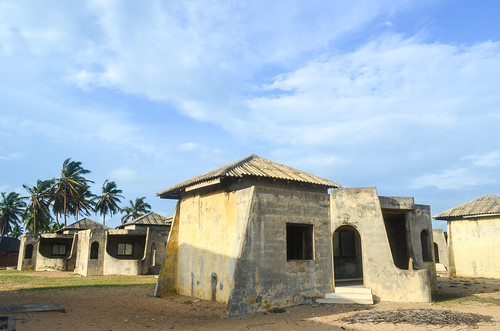


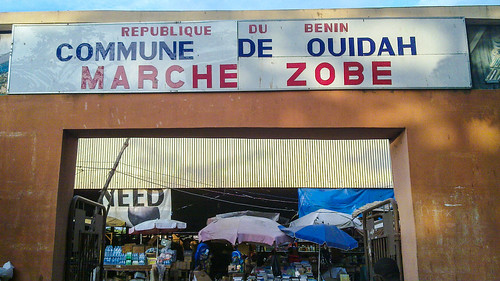
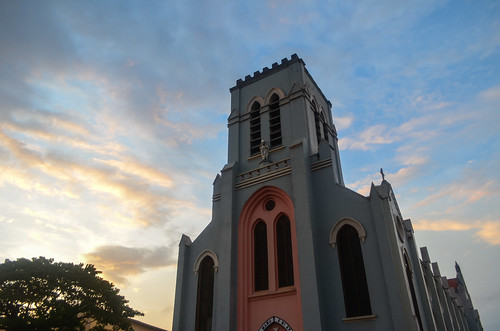
Grand-Popo
Grand-Popo is the destination for laziness: beaches and nothing else than slow life.
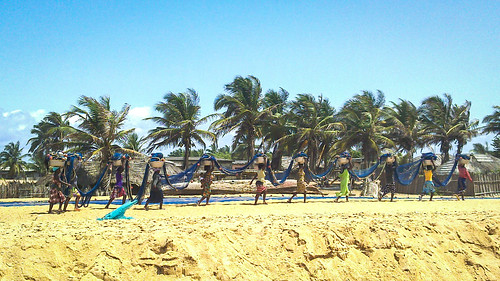
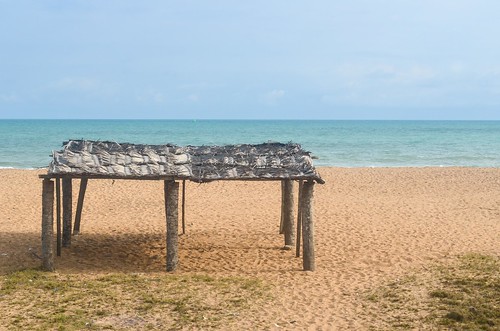







Merci pour ces belles photos !
J ‘ai eu l’impression de retourner un peu là-bas